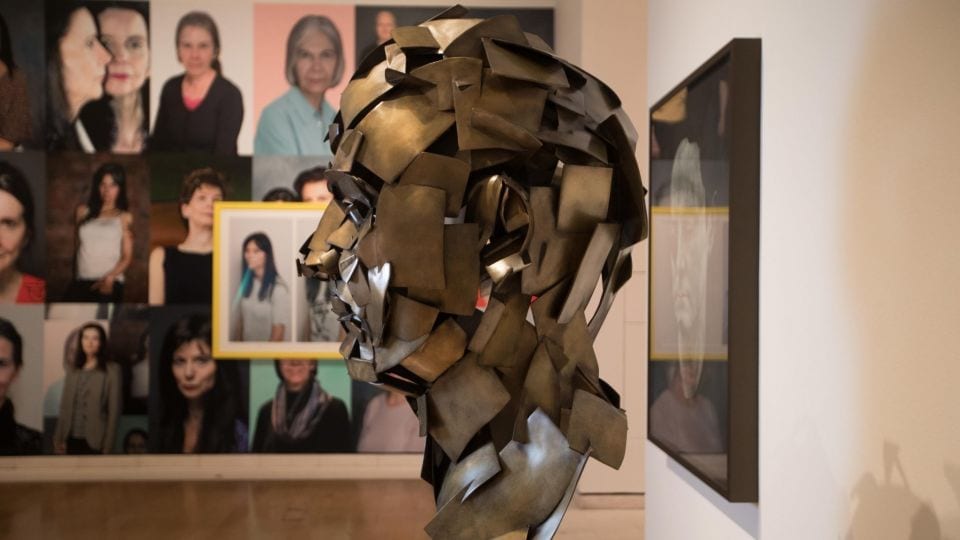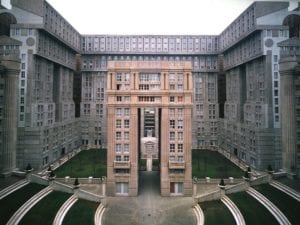Drawing from casts and life models was long considered essential training for any aspiring artist, and was once a staple of the RA’s art school. Now, on the cusp of the RA’s 250th anniversary, From Life takes an inquisitive look at the tradition and its ongoing relationship with artists today. Adrian Locke, Senior Curator, discusses the themes at large.
A: Where did the idea for this exhibition originate? Could you describe the process from inspiration to the final curation stages?
AL: The idea for the exhibition came out of the desire for the Royal Academy to start its 250th anniversary year by exploring one of the oldest and most traditional disciplines of fine art education, in other words to go back to the origins of the tutoring provided by the Royal Academy Schools from its inception in 1769: drawing, both from antiquity and from life. At the time, any aspiring student was required to demonstrate their skill at drawing before they could consider a serious career as an artist.
In terms of curating the exhibition we wanted to draw on a broad range of artists that work from life but that use different approaches whether that is in terms of technique, material or subject matter. We were also keen to show how technologies, new and old, has been used by artists who work from life. Jeremy Deller’s conceptual piece Iggy Pop Life Class (2016) and Cai Guo-Qiang’s film One Thousand Youngsters Drawing David (2010), both very different approaches to capturing the intimacy, energy and focus of a life class, were the works around which the rest of the exhibition was constructed.
A: Technology is undeniably affecting all realms of life, and in extension, the arts. Why do you think it’s so important to discuss the evolution of new methods in today’s age?
AL: Art has changed throughout history constantly responding to new technologies as well as fashions. The emergence of VR and AR, for example, means that people are much more aware of these new (or rather evolving) digital technologies. These will continue to develop so now seems a good moment to capture where this technology can take us and see how artists and architects respond to it juxtaposing it with material by artists that continue to capture works in more conventional ways.
A: How do you think that presenting the exhibition across two spaces affects the conceptualisation of the works on display and the connections between them?
AL: Using two spaces does inevitably create a degree of separation between the two components of the exhibition but they are conceived as one. Upstairs in the Sackler Gallery the exhibition appears more conventional but closer inspection reveals a number of artists embracing new technologies to make their work which creates the bridge into the Tennant Gallery and the digital experience.
A: What types of work can audiences expect to be seeing? Are they displayed chronologically or thematically?
AL: There are a number of historic works drawn from the RA Collections that open the exhibition, allowing the visitor to trace the origins of life drawing at the RA. These are based on artists and students working from antique casts and from life, in other words the origins of learning to draw. There follows a sequence of works by such contemporary artists as Jeremy Deller, Cai Guo-Qiang, Jenny Saville, Ellen Altfest, Antony Gormley and Yinka Shonibare that explore these two themes, that is artists working from casts and life while appreciating how some have embraced new technologies in their work.
A: Whilst the exhibition looks at the importance of canonical works, it also takes into account emerging technologies. Could you discuss some of the artists that are part of this, and how they compare / contrast to the more traditional pieces?
AL: There are different technologies at work here. From film (perhaps no longer seen as a new technology) by Cai Guo-Qiang to multiple light projections to create body scans as used by Antony Gormley; from forensic digital ageing as used by Gillian Wearing to the first three-dimensional sculpture made using Google Tiltbrush by Jonathan Yeo. Alongside this are traditional life class drawings in Jeremy Deller’s Iggy Pop Life Class or Humphrey Ocean’s drawing from a life class he took as a student when Ian Dury was his tutor.
A: This is one of the first times that the RA has embraced these new platforms and techniques – why is it so important to be supporting, displaying and connecting with such dialogues this year?
AL: Since its founding in 1768 the RA has had a fine art school at its very heart. The idea was to display the art of the day while helping create the next generation of artists. The idea of creating, embracing new technologies and exhibiting art has always been part of what the RA does and now, with our 250th anniversary, seemed like the right moment to bring some of these elements together – the art of yesterday, today and tomorrow around one theme, from life.
A: How do you think these new works shed light upon some of the more classical practices, for example, pushing the boundaries of painting and posing questions as to its place in contemporary society as an expressive medium?
AL: The ability to create art in three dimensions in a digital space present completely new ways of making. The creator can walk through or around the work as they make it constantly changing elements of it (colour, line density, adding special effects etc.) through a broad menu of options. This digital work creates a degree of artistic freedom that is very liberating. In some ways, it breaks down the some of the inhibitions that people might have approaching an easel or a blank sheet of paper to start a painting or a drawing. In that regard, I think this new technology is quite distinct from classical practices. Having said that it certainly pushes the boundaries of painting to new areas. The main issue is how one experiences this work since it is not the same as hanging a painting on the wall.
My sense is interest will continue to grow and we will see more of these technologies appearing in galleries and museums as well as exhibitions and, as we have seen in the past, technologies become more user friendly and compact over time. Further development should see a more flexible and portable system that makes VR and AR much more commonplace both as a tool of creation as a visitor experience.
A: How have you incorporated VR into the show; what does this offer audiences and how will this be manipulated within the space?
AL: In the Tennant Gallery are three VR works by Humphrey Ocean, Yinka Shonibare and Farshid Moussavi which the visitor can experience and engage with. This allows the audience to participate directly with these works; this gives them the chance to participate directly in the act of creating giving free rein to their imagination as well as appreciating what the technology is capable of. This will allow them to see why some artists will chose to work with this technology and perhaps imagine what the future possibilities of it are.
A: What else do you have planned for 2018?
AL: This is a rather lengthy answer, but we have so much coming up this year I don’t want to miss anything out!
In May 2018, we’ll welcome you to a new Royal Academy of Arts. Architect David Chipperfield is uniting our two sites, creating spaces to showcase our historic collection and art school. There’ll also be a learning centre and a brand-new lecture theatre – all alongside a packed programme of exhibitions and events.
First, we’re reuniting a host of spectacular masterpieces for a once-in-a-lifetime exhibition about Charles I, whose art collection was scattered across after his execution. In our new galleries, we will present an exhibition around the theme of landscape by Tacita Dean and take a look at the distinguished career of architect Renzo Piano.
And together with the Summer Exhibition 2018, coordinated by Grayson Perry RA, we’ll celebrate this annual art extravaganza with a look at key moments in its 250 year history in The Great Spectacle. It’s also 250 years since James Cook’s first voyage to the South Pacific, so we’ll be putting a spotlight on the rich and diverse art of this continent in Oceania. And finally, we’ll present Klimt / Schiele, a rare chance to see the world’s greatest collection of work on paper by two of the early 20th century’s greatest draftsmen.
From Life runs until 11 March. For more information: www.royalacademy.org.uk
Credits:
1. From Life installation view, 2017. Photo: David Parry.




